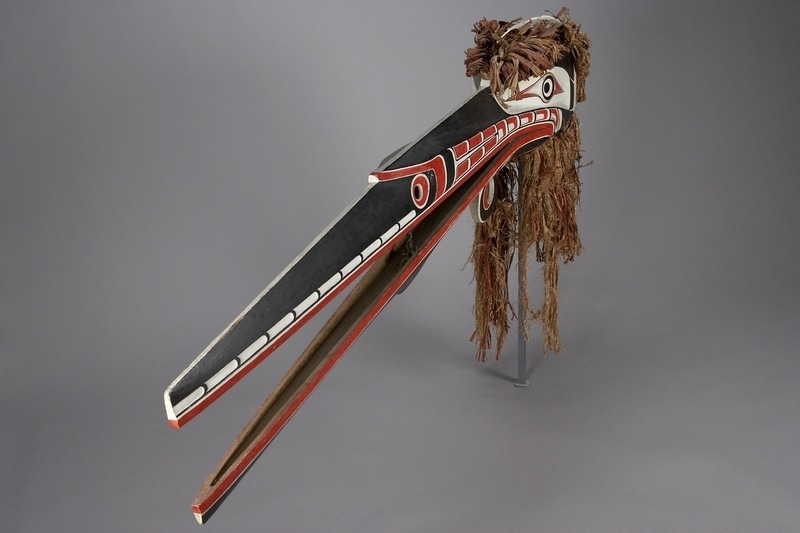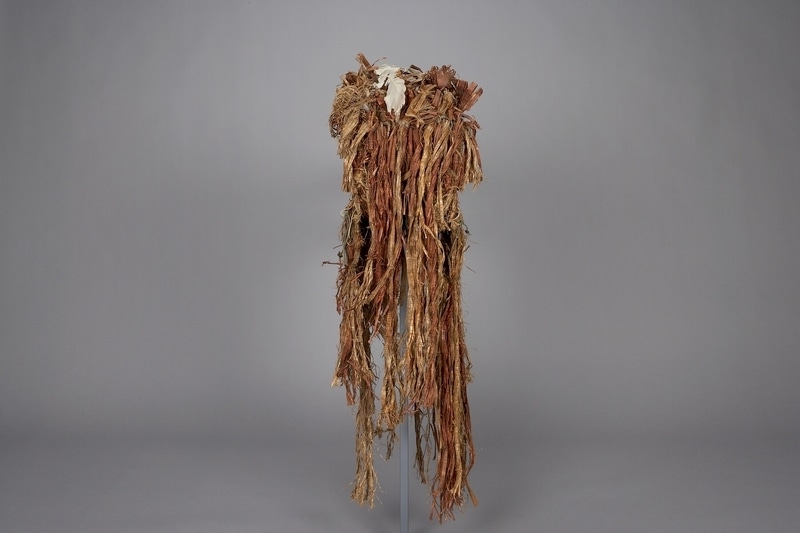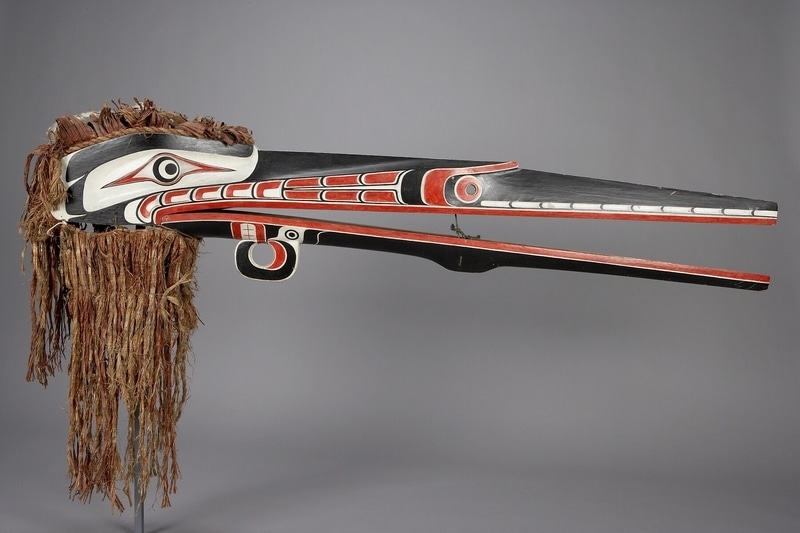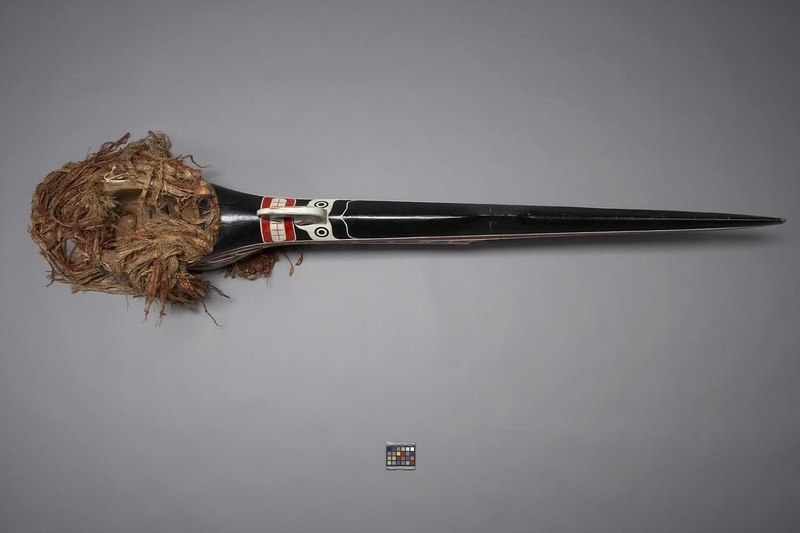Mask Item Number: A6120 from the MOA: University of British Columbia




Description
Large, carved, wooden, hokhokw mask with a long beak and circular cutout nostrils. The beak is hinged with pieces of leather nailed to either side. The beak is painted black with a red mouth and nose. Along the front end of the beak are ten, white, incised U-forms. At the back of the nose are two large black and red U-forms followed by smaller red and white split U’s outlined in black. The eyes are white, outlined in black and red, on a white, ovoid shaped background; brow is black. The inside of the mask is hollow with the exception of twine used to open and close the beak. The top and side edges of the mask are lined with braided cedar. The top has short pieces of cedar creating a fringe, while the back has longer strips that hang over the wearer. Intertwined in the cedar are a few feathers. The bottom has crooked beak depicted with black and white eyes, red and white mouth and a protruding, crooked beak. The mask is painted black, red, and white with Northwest Coast stylized designs.
History Of Use
Worn by Hamats!a dancer.
Narrative
Originally had a skull on top of the head (J. Seaweed, 1966).
Iconographic Meaning
Represents Hukxhukw of Heaven: Huxhugwaxtawe', one of the servants of Baxbakwalanuxsiwe', cannibal at the north end of the world.
Item History
- Made by Willie Seaweed (Maker) in Blunden Harbour, British Columbia, Canada ? or Ba'as, British Columbia, Canada ? during 1941
- Collected in Village Island, British Columbia, Canada and 'Mimkwamlis, British Columbia, Canada
- Owned by Hector Webb
- Owned by Alice Mountain before June 16, 1953
- Received from H. R. MacMillan (Funding source) and Alice Mountain (Seller) on June 16, 1953
What
Who
- Culture
- Kwakwaka'wakw
- Creator
- Willie Seaweed (Maker)
- Previous Owner
- Hector Webb and Alice Mountain
- Received from
- H. R. MacMillan (Funding source) and Alice Mountain (Seller)
Where
- Holding Institution
- MOA: University of British Columbia
- Made in
- Blunden Harbour, British Columbia, Canada ? or Ba'as, British Columbia, Canada ?
- Collected in
- Village Island, British Columbia, Canada and 'Mimkwamlis, British Columbia, Canada
When
- Creation Date
- during 1941
- Ownership Date
- before June 16, 1953
- Acquisition Date
- on June 16, 1953
Other
- Condition
- good
- Current Location
- Case 22
- Accession Number
- 2010/0019